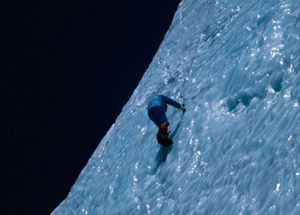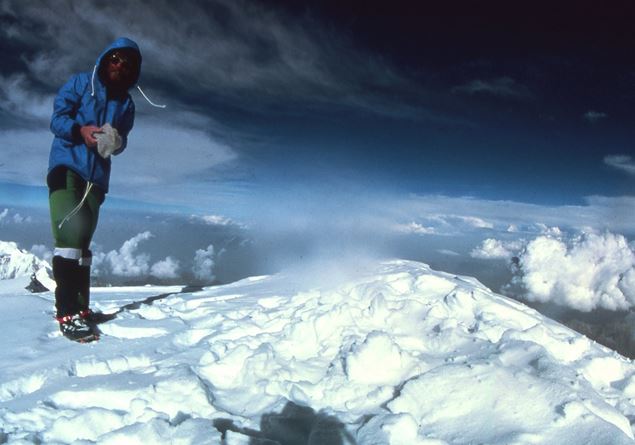On 16 October 1986, Reinhold Messner, an Italian mountaineer, wrote an indelible page in the history of humanity: he becamehe is the first man to conquer all 14 eight-thousanders of the planet. With the ascent of Lhotse, Messner not only completed a feat considered impossible, but demonstrated that human will, combined with exceptional physical and mental preparation, can overcome any limit. His was not just a challenge to the mountains, but an inner search, a dialogue with nature and with himself, which made him a legendary figure, capable of inspiring generations of mountaineers and dreamers.
Born on September 17, 1944 in Bressanone, Alto Adige, Messner grew up in the Dolomites, where he developed a visceral passion for the mountains. From a young age, he demonstrated extraordinary talent, climbing increasingly daring routes and innovating mountaineering techniques. His philosophy was clear: climb alpine style, light, without supplementary oxygen, respecting the mountain and himself. An approach that made him unique, and which revolutionized modern mountaineering.
His record is not just a sporting record, but a symbol of perseverance, courage and humility. Messner faced every eight-thousander with unshakable determination, often alone, defying the cold, the wind, loneliness and death. Each peak conquered was a stage in a journey that goes beyond mountaineering: a journey inside the human soul.

The 14 peaks of Eternity
1. Nanga Parbat (8,126 m) – 27 June 1970
Style: Expedition
Companion: brother Günther Messner
Messner’s first great challenge turned into tragedy: his brother Günther lost his life during the descent. This event forever marked Reinhold, who from that moment climbed with a new awareness of the risk and value of life.
2. Manaslu (8,163 m) – 25 April 1972
Style: Expedition
Companions: Andi Schlick, Franz Jäger
Manaslu, in Nepal, was Messner’s second peak. The climb, in adverse weather conditions, demonstrated his ability to resist and adapt, qualities that would distinguish him in all subsequent undertakings.
3. Gasherbrum I (8,080 m) – 10 August 1975
Style: Expedition
Companion: Peter Habeler
With Peter Habeler, Messner climbed Gasherbrum I, also known as Hidden Peak. This ascent marked the beginning of a legendary partnership, which would lead the two to write memorable pages of mountaineering.
4. Gasherbrum II (8,035 m) – 13 August 1975
Style: Expedition
Companion: Peter Habeler
A few days after Gasherbrum I, Messner and Habeler also conquered Gasherbrum IIdemonstrating extraordinary resistance and synergy.
5. Everest (8,848 m) – 8 May 1978
Style: Solitary, without oxygen
Partner: Peter Habeler (uphill only)
Everest, the “Roof of the World”, was conquered by Messner without supplementary oxygen, a revolutionary feat. His ascent opened a new era in Himalayan mountaineering, demonstrating that man can overcome his limits through sheer force of will.
6. K2 (8,611 m) – 12 July 1979
Style: Expedition
Partner: Michael Dacher
The K2, the “Wild Mountain”, was climbed by Messner following a new route, the “Magic Line”. The descent was a nightmare, but his determination brought him to safety, consolidating his reputation as an invincible mountaineer.
7. Shishapangma (8,027 m) – 28 September 1982
Style: Expedition
Companions: Friedel Mutschlechner, Oswald Ötz
Shishapangma, the only eight-thousander entirely in China, was climbed by Messner in an international expedition.
8. Kanchenjunga (8,586 m) – 6 October 1982
Style: Expedition
Companion: Friedel Mutschlechner
The Kanchenjunga, the third highest mountain in the world, was climbed by Messner in extremely cold conditions. His leadership and ability to make crucial decisions were crucial to the success of the expedition.
9. Broad Peak (8,051 m) – 5 July 1983
Style: Expedition
Partner: Michael Dacher
Broad Peak, known for its endless ridges, was climbed by Messner in a fast and well-organized expedition, demonstrating his ability to adapt to all types of terrain and conditions.
10. Cho Oyu (8,188 m) – 5 October 1983
Style: Expedition
Companions: Hans Kammerlander, Michael Dacher
Cho Oyu, considered one of the most accessible eight-thousanders, was climbed by Messner in a fast and effective expedition, demonstrating that even the “easiest” mountains require respect and preparation.
11. Annapurna (8,091 m) – 24 April 1985
Style: Solitary
Companion: None
Annapurna, the first eight thousand to be climbed, was conquered by Messner alonefollowing a new and dangerous path. His ascent was a tribute to the pioneers of mountaineering and further proof of his courage.
12. Dhaulagiri (8,167 m) – 15 May 1985
Style: Solitary
Companion: None
The Dhaulagiri, the “White Mountain”, was climbed solo by Messner, in one of his most daring feats. The climb was characterized by bitter cold and absolute solitudewhich only a mountaineer of his caliber could tackle.
13. Makalu (8,485 m) – 26 September 1986
Style: Solitary
Companion: None
A few months before Lhotse, Messner climbed Makalu, one of the most isolated and technically difficult mountains. His solo climb was another example of his extraordinary stamina and determination.
14. Lhotse (8,516 m) – 16 October 1986
Style: Solitary
Companion: None
On October 16, 1986, Reinhold Messner reached the summit of Lhotse, thus completing the climb of all 14 eight-thousanders. It was a moment of pure joybut also of deep reflection: he had realized a dream that seemed impossible, demonstrating that with passion, courage and humility, man can overcome any limit.
A legacy that goes beyond the mountains
On October 16, 1986, Reinhold Messner not only conquered a peak, but a dream. His record is a hymn to freedom, courage and faith in one’s own abilities. Messner has demonstrated that, with passion and determination, even the most arduous challenges can be overcome. His story is an example for everyone: no matter how high the mountain is, what matters is the desire to climb it, step by step, with humility and respect.
Today, 39 years after that day, his message is more relevant than ever: the mountains are teachers of lifeand every peak conquered is a victory for the human spirit.
Photo Ansa and Reihold Messner Archive


